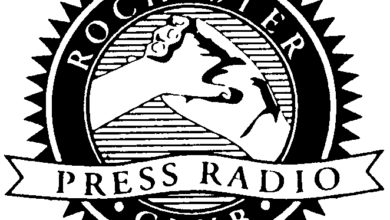Kendall residents seek enhanced water system
by William Matthias
A number of Kendall residents have become increasingly frustrated over their lack of access to public water, as well as the quality and quantity of water retrieved from private wells, and they’ve petitioned the Town Board to take swift action.
Town officials, however, contend they are consistently working toward the possibility of expanding Kendall’s public water system, but these types of projects require considerable amounts of time and effort.
“We are trying to be diligent about it,” said Town Councilman Bart Joseph. “We are not just sitting on our thumbs. We are getting the work done. Unfortunately, it’s not as fast as an individual would want. Things do come up.”
Since August of 2009, more than 110 residents from eight different roads have signed a total of six petitions urging the Town Board to elevate the level of priority given to public water access. The petitions call for further investigation into the feasibility of installing new water mains and applying for government grants for the appropriate funding.
In addition to the six petitions, the Town Board received an “advisory” petition in September of last year that not only calls for water expansion, but also expresses adamant disapproval of the town’s lease agreement with the Monroe County Water Authority.
The most recent petition was submitted in late February. It urges town officials to “act now” in regard to public water along West Kendall Road.
“I’ve lived on West Kendall Road for 46 years and we’ve been fighting to get water for almost all that time,” said Karen Anderson, one of 23 residents who signed that particular petition. “We have very hard water – filled with sulfur, iron and salt. I don’t drink it or cook with it. Even showering with it makes me scared.”
Anderson said her concern stems in part from the two “dumps” on West Kendall Road. The landfills she referred to are the Leastman Landfill, in the Town of Murray, and the Kendall Landfill, also known as the Donald Baugh Landfill.
The state Department of Environmental Conservation (NYSDEC) delisted the Leastman Landfill, which was operated from the 1950s until 1973, in 2002. Extensive sampling of soil, groundwater and sediment at the site one year prior indicated that “no consequential hazardous waste contamination” was present, according to an email from the NYSDEC press office.
The Orleans Disposal Service, Inc. operated the second site, The Kendall Landfill, from 1977 to 1982. The site reportedly received municipal solid waste, domestic sewage sludge and septic tank waste. However, a 1991 NYDEC investigation could not confirm any hazardous waste disposal. The site was delisted in 1994.
In an email to the Kendall town supervisor, Public Health Sanitarian Todd Shervin from the Orleans County Health Department said several private wells – on West Kendall Road, Petersmith Road and Roosevelt Highway – were also tested in 1991. The testing revealed no detections of any chemicals of concern.
“If recent testing does show contaminants of concern, I can request that the state health department allow me to do further testing of the local private wells,” the email reads.
Shervin also wrote that residents can test their wells through a private lab and that “running well water through a good charcoal filter would remove most of any harmful organic contaminants that might be present.”
Quantity also an issue
The quality of local well water is not the only concern, however. Quantity is mainly an issue during the summertime. Many residents are forced to purchase bulk water from a private hauler.
“In the summertime I have to buy 1,000 gallons of water every two to three weeks at $45 per load,” said Joe Rose of Center Road. “I have two wells, but one has a lot of sulfur and the other runs out when we don’t get enough rain.
Rose also said he believes the town has no solid plan of action. “I see no project management plan, tasks or timelines. When they do get the data collected, when are they going to start doing something?”
Bart Joseph said the Cottages at Troutburg project and the recent Beechwood Cemetery vandalism, among other things, have impeded progress on public water work. Despite these obstacles, the town has laid the groundwork for what could be a new water district, pending government grant eligibility.
In 2011, Joseph, along with Town Councilwoman Margaret Lynn Szozda and Superintendant of Highways Warren Kruger, finished compiling a 115-page report exploring three potential water-expansion projects – the Center Road and Woodchuck Alley, Transit Road and Lakeshore projects.
With the projected costs of these projects – more than $700,000 for the first two and about $188,000 for Lakeshore (using 12-inch PVC piping) – the plans are not economically viable options, as they would cost residents within new water districts thousands of dollars each year, according to the report. The town would need a government grant, in addition to a loan, to pursue any of the projects, said Town Supervisor Dan Gaesser.
Searching for funding
Gaesser said the town is looking at two different government grants as possible options for funding, one from the Community Development Block Grant (CDBG) program and the other from the USDA Rural Development Agency (RD). The town received a $562,000 CDBG grant in 2005 under a previous administration that, in turn, loaned it to the previous owner of Eagle Creek Marina.
“The town intended for it to be a revolving economic development fund,” Gaesser said. “The idea was that after repayment, we could loan it out again.”
Gaesser said the marina was foreclosed on and the loan went into default, which affects current CDBG grant eligibility.
“I have been in communications with the grant administrator and we are waiting for guidance as to what actions we need to take.”
The RD grant is currently not an option, either. RD determines grant eligibility, in part, by median household income (MHI) indicated by census data. The MHI ceiling for RD grant eligibility is $56,882, said Bill Reemsten, senior planner at Stuart I. Brown Associates, an affiliate of the town’s engineering firm. The Town of Kendall’s MHI in the 2010 census is $70,673.
Reemsten said the town could become eligible only if RD-approved household income surveys of the proposed service areas can document MHIs below RD’s eligibility ceiling.
The town in late February mailed out nearly 300 “informal” surveys to identify neighborhoods that could potentially qualify for grants and low-interest loans for water projects. Gaesser said the surveys will help the town gauge the “percentage of need and interest” in water-line expansion, after which the Town Board can decide if an official household income survey is warranted.
“Our immediate goal is to collect the data, get it to our engineers to analyze it, and then they can advise us on how best to proceed.”




